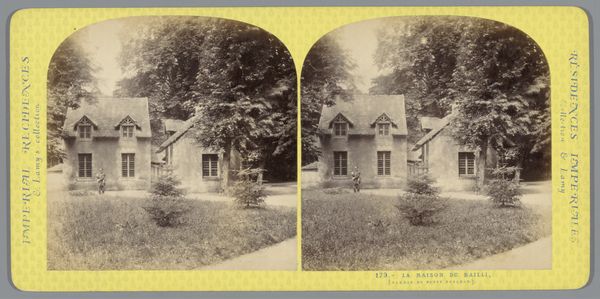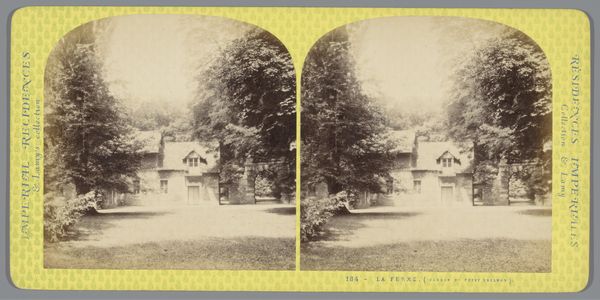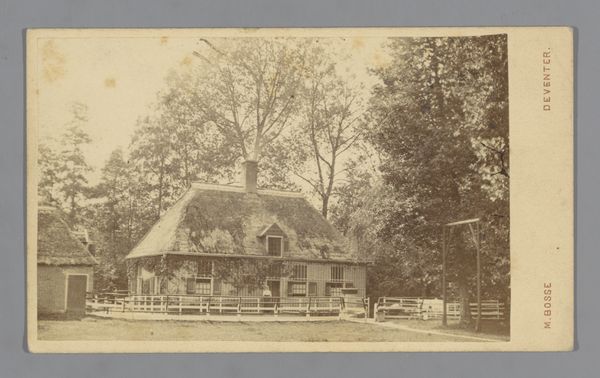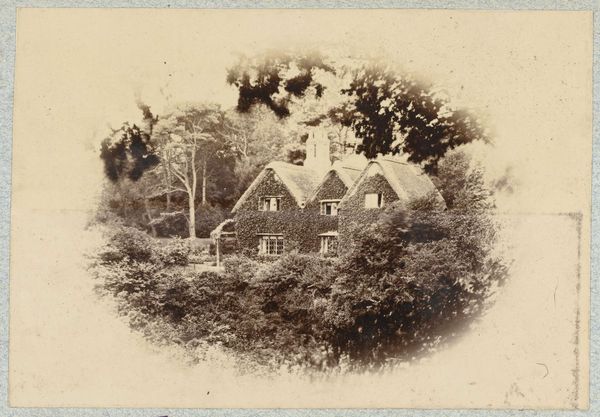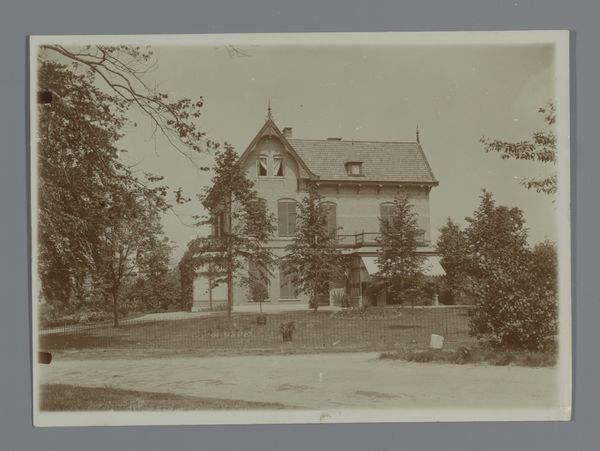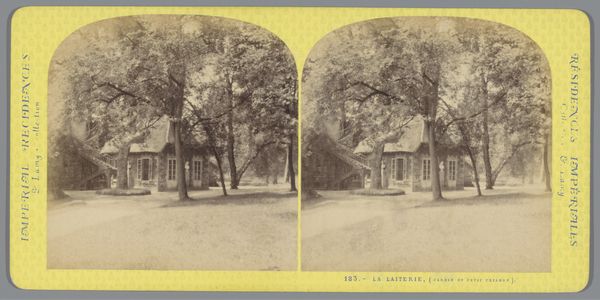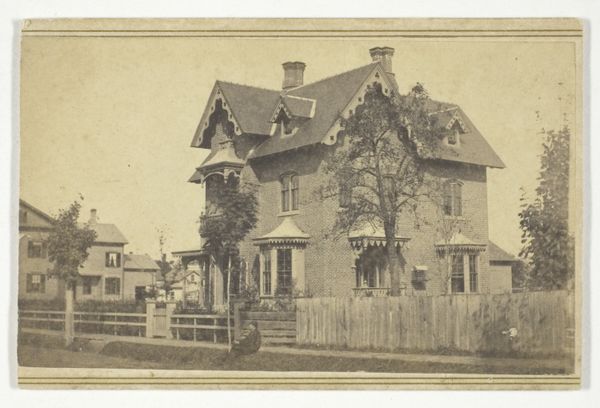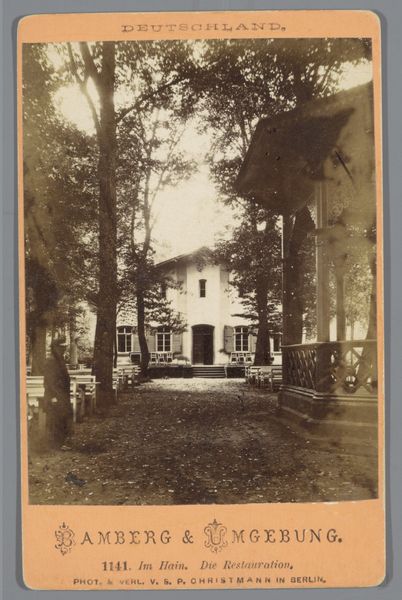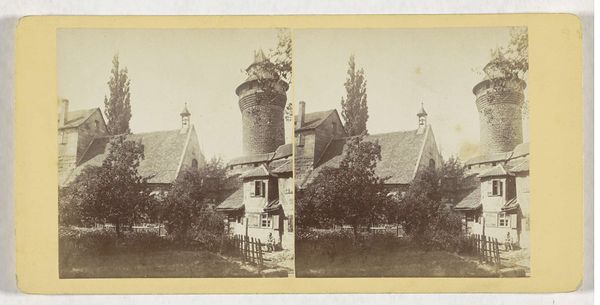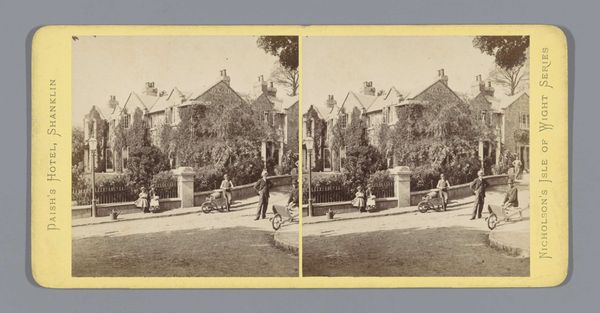
Huis bij de watermolen in Le Hameau de la Reine bij het Petit Trianon 1860 - 1880
0:00
0:00
Dimensions: height 87 mm, width 178 mm
Copyright: Rijks Museum: Open Domain
Curator: Looking at "Huis bij de watermolen in Le Hameau de la Reine bij het Petit Trianon," taken sometime between 1860 and 1880 by Ernest Eléonor Pierre Lamy, the sepia tones and composition give me a strong sense of nostalgia. Editor: Yes, there is something really whimsical about this little house… almost a fairytale cottage lost in the woods. I feel like I could step into a scene from a storybook. It is the antithesis of everything modern and that, of course, tugs at the heartstrings. Curator: Well, consider the historical context, in that this isn’t just any cottage, it’s part of Marie Antoinette’s fabricated rustic village at Versailles. It speaks to a romanticized, idealized past that never truly existed. This aesthetic served as a symbol, almost a retreat from the complexities and inequalities of the era. This particular dwelling references, of course, the Miller's House, underscoring that return to nature so idealized by philosophers like Rousseau. Editor: So, the irony being, this supposed embrace of simplicity was staged, controlled, and deeply intertwined with power and privilege. Curator: Precisely! It's an elaborate performance of pastoral life, revealing layers of artifice that are historically very charged, almost decadent. Editor: But you can see why it captivated people, though. The symmetry of the trees, the cute architecture… It offers this dream of harmony. A way to escape whatever troubles you, if only for a moment. It invites contemplation about simplicity, or our yearning for it, while recognizing its artificiality. Curator: Absolutely. And I find it fascinating how Lamy, through the relatively new medium of photography, participates in constructing and preserving this carefully curated vision of the past, offering it to an expanding audience in an increasingly industrialized world. It's about curating nostalgia itself. Editor: This photograph makes one ask themselves, "What parts of history and 'tradition' do we highlight and remember, and why?". Something about that question, for me, always brings a renewed understanding to this little idyllic image.
Comments
No comments
Be the first to comment and join the conversation on the ultimate creative platform.
